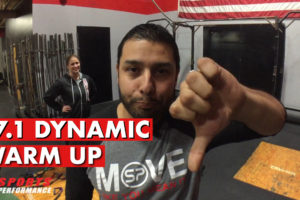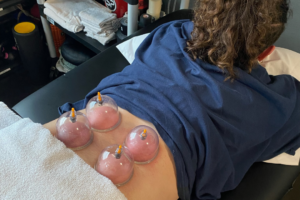
There is a lot of information in the world on stretching. We’ve had a more than a few clients who seek us out because they have approached their injuries/nagging pains with the “stretch the pain away” approach. Unfortunately, injuries and pain are rarely the result of tightness alone, so the stretching approach isn’t always the most efficient way to solve the problem. Tightness tends to be a symptom of a greater issue rather than the cause. While stretching might feel good, there are some cases when you should try a different approach.
Tightness tends to be a symptom of a greater issue rather than the cause.
Below are three cases when you SHOULD NOT stretch a muscle:
1. When you just pulled it.
Whether you’ve pulled a calf muscle, hamstring, groin, or lat, hold on aggressive stretching for at least 2 weeks. Generally, a pulled muscle is the result of an “overstretch” where the muscle is contracting and some of the fibers get pulled apart and strained. After a pull, the tissues need time for the repair process to lay down new tissue. This new tissue benefits more from gentle contractions rather than continuing to stress the muscle with the same stretch that injured it.
2. Immediately prior to explosive movements.
If you’re getting ready to sprint, jump, attempt a one rep max, or perform other explosive movements, your best bet is a dynamic warmup that takes your muscles through less intense versions of that movement. Stretching immediately prior to explosive movements decreases your power output. If you do want to include stretching as a part of your warmup, make sure you follow it up with more active movements leading into your big effort.
Stretching immediately prior to explosive movements decreases your power output.

3. When you’ve already tried it for 2 months
Many people find that they get temporary relief with stretching, but it never seems to resolve the issue for the long term. If you’re somebody who has tried constant stretching for your muscular or joint pain and it hasn’t solved the problem, it might be time for a different approach. When it comes to hamstrings, hip flexors, and shoulders, and many other muscles, eccentric strengthening can help decrease the sensations of tightness or pain, and improve your strength.
Many people find that they get temporary relief with stretching, but it never seems to resolve the issue for the long term.
Bottom Line: While stretching is helpful for some things, it certainly isn’t a cure all, and if your approach to your pain includes only stretching, it might be time to change it up. Hold off on stretching if you’ve recently pulled a muscle, if you’re about to perform explosive movements, or if you’ve been trying for a long time and it’s just not sticking.
As always, we hope this helps! If you have any questions or if you would like to read about certain topics, feel free to send us an email at TeamSP@SportsPerformancePT.com.
-Dr. Marissa Rescott, PT, DPT, CF-L1

STAY CONNECTED
Instagram: CLICK HERE
Facebook: CLICK HERE
YouTube: CLICK HERE
Podcast: CLICK HERE
Online Store: CLICK HERE
TUNE IN TO OUR PODCAST












